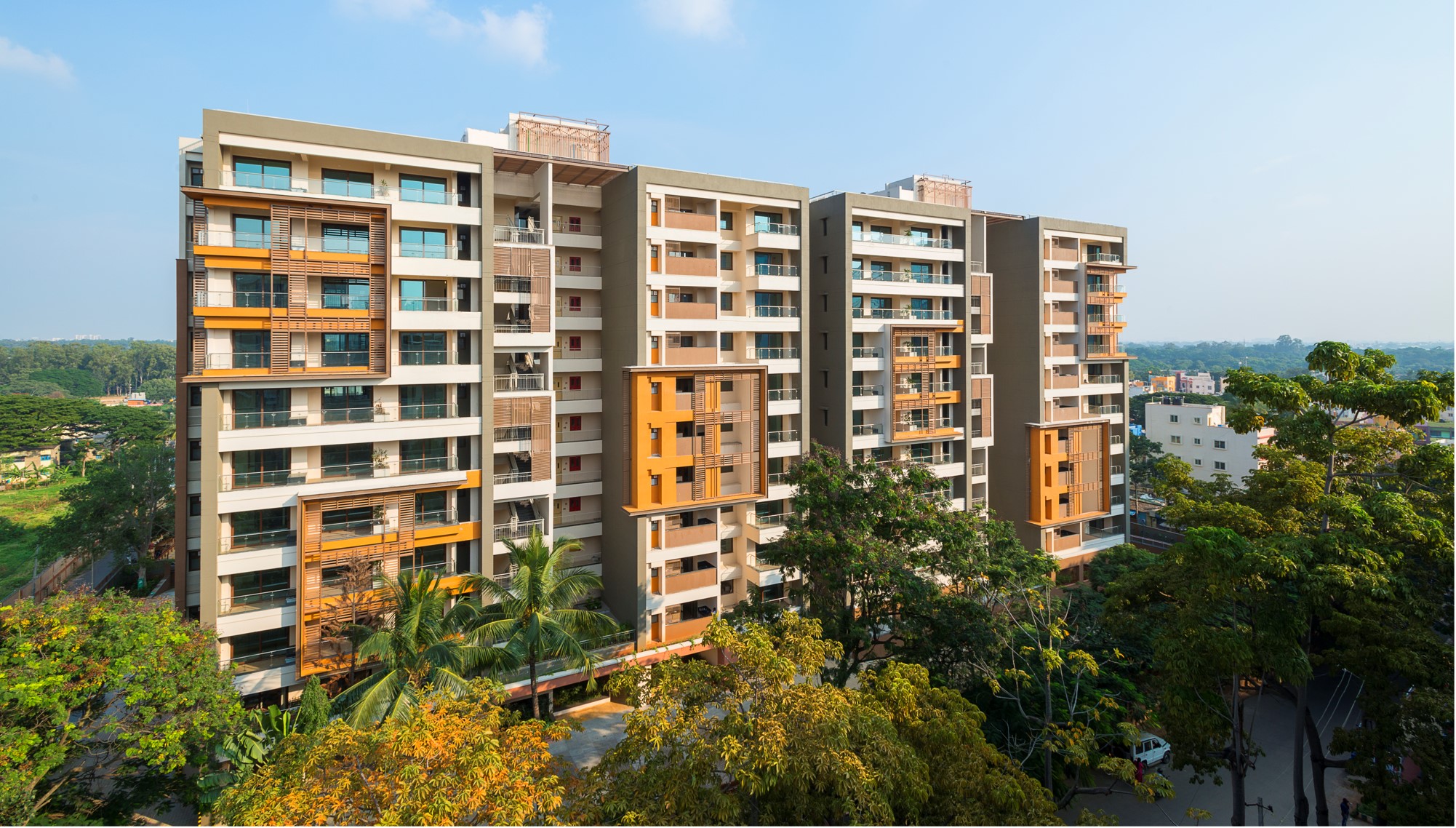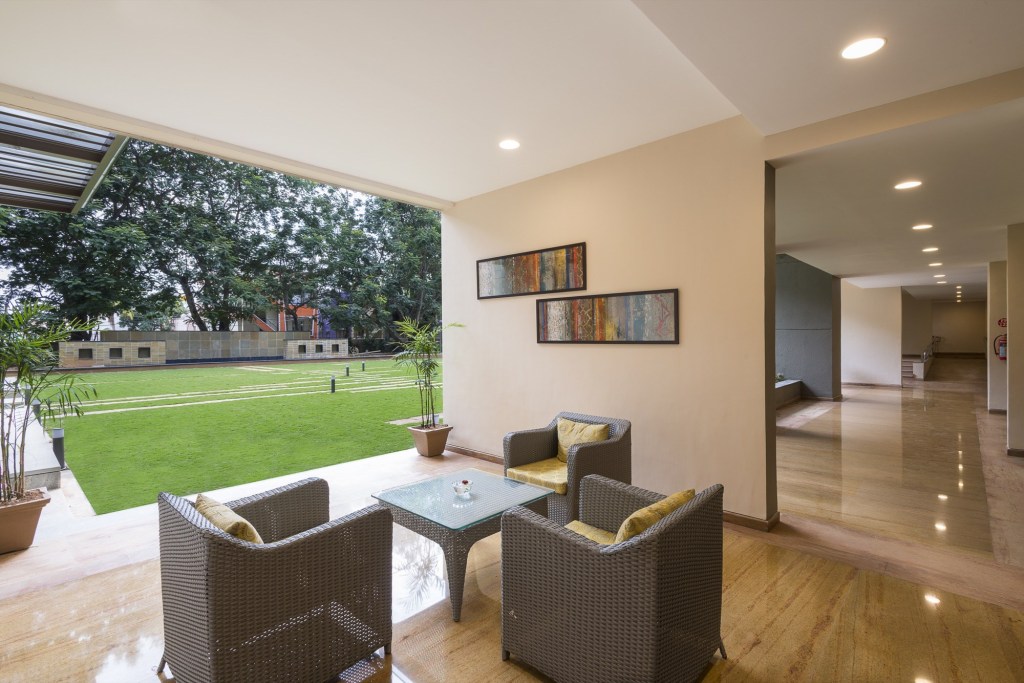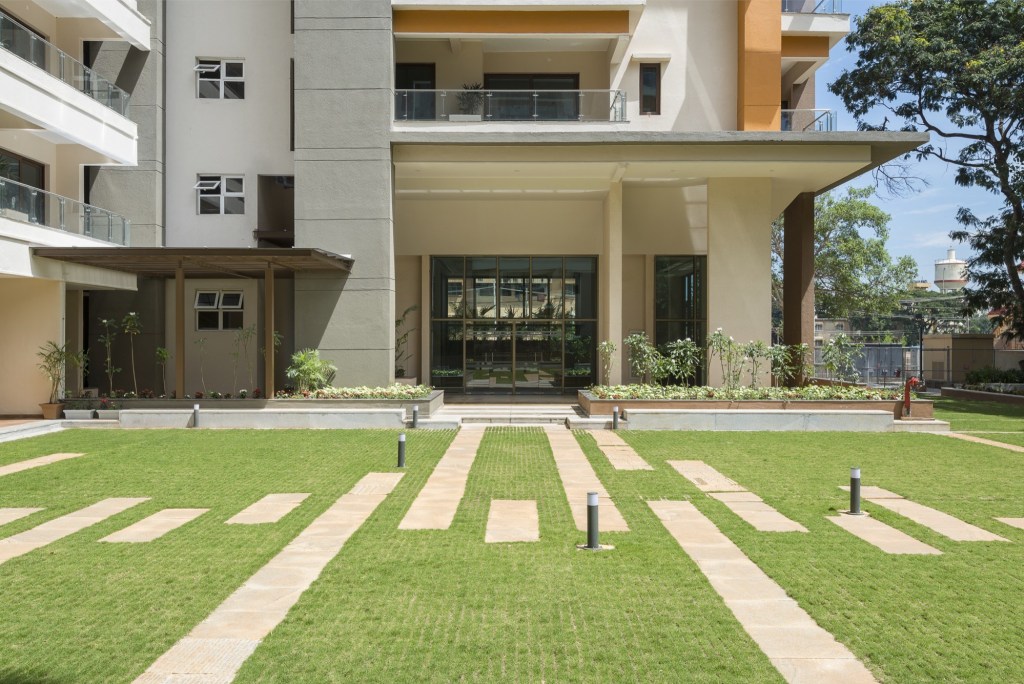ITC Mudfort is a 10-storey residential complex spread over 213,613 sft for ITC senior management located at Jeevanhalli in Bangalore. Completed in 2018, the project consists of 54 3-BHK flats in two wings. Inspite being in a dense urban fabric, this project shows how climate responsive design can still be achieved for contemporary buildings with a creative and integrated approach.
The webinar featured the client, the architect and the green building consultants for the project, in a discussion about the design approach, strategies and challenges behind the project. It explored key aspects of the project, like why the designers opted for a high-rise development in the middle of a predominantly low-rise neighbourhood, the unusual decision to go for two different green building certifications and its low energy demand despite a less than favourable site orientation.
The client had a clear design brief- to provide sustainable living spaces that would serve as a refuge from the surrounding traffic, concrete jungle and day-to-day life stress. The site selected was right next to the ITC workplace, so that employees could easily walk down to their workplace and back. To pursue two green building certifications including IGBC Green Homes and GRIHA (for new construction) was also a client requirement with the intent of incorporating the best of both worlds widening the scope and benchmark for performance.
This commitment to sustainability early into the project helped the design team greatly in evaluating various design options. The building footprint was minimized in order to preserve existing greens, provide large landscape spaces and reduce vehicular circulation. The thoughtfully designed envelope, with its low window wall ratio, insulated roofs and walls and shading design are key to the building’s low energy demand. Deep verandas protect the west-facing spaces from heat gain. The envelope also ensures adequate ventilation and daylighting and 70% of the habitable spaces have provision for cross ventilation and 80% receive daylighting within 300 lux levels.
On-site renewable energy helps offset the energy demand further. with 85% of the hot water demand being met by the solar water heating system and the external lighting system by wind energy.
The project has been awarded two green certifications- the IGBC Green homes Platinum rating as well as GRIHA 5-star rating. In fact, with an Energy Performance Index of 58.7 kWh/m2-yr, the project well surpasses energy reduction benchmarks set by these rating systems- 19.7% savings over IGBC Baseline Case and 30.9% savings over Benchmark EPI. It’s rare for a project to pursue two certifications and it exhibits the degree of commitment on the part of the clients to sustainable goals.
Other sustainability highlights include 54% reduction of indoor water use, use of low-VOC paint and use of local materials. The careful design considerations for sustainability extend well beyond the building footprint. 25% of the site area is landscaped and has retained 42 out of 49 existing trees. 68% of the soft landscape uses native or drought-tolerant species. The entire irrigation demand is met by recycled water alone. Open parking has been limited to 14% with the remaining provided in the basement, with preferential parking for alternative fuel vehicles and reserved spaces for the physically challenged.
One of the most important aspects behind ITC MudFort’s success is that the clients were completely on board with the sustainability goals set out by the architect and green building consultants. With its integrative team structure, innovative design strategies and strong community connect, ITC MudFort certainly pushes the envelope for other residential projects in the country.
This webinar was conducted live on 10th May, 2019.




